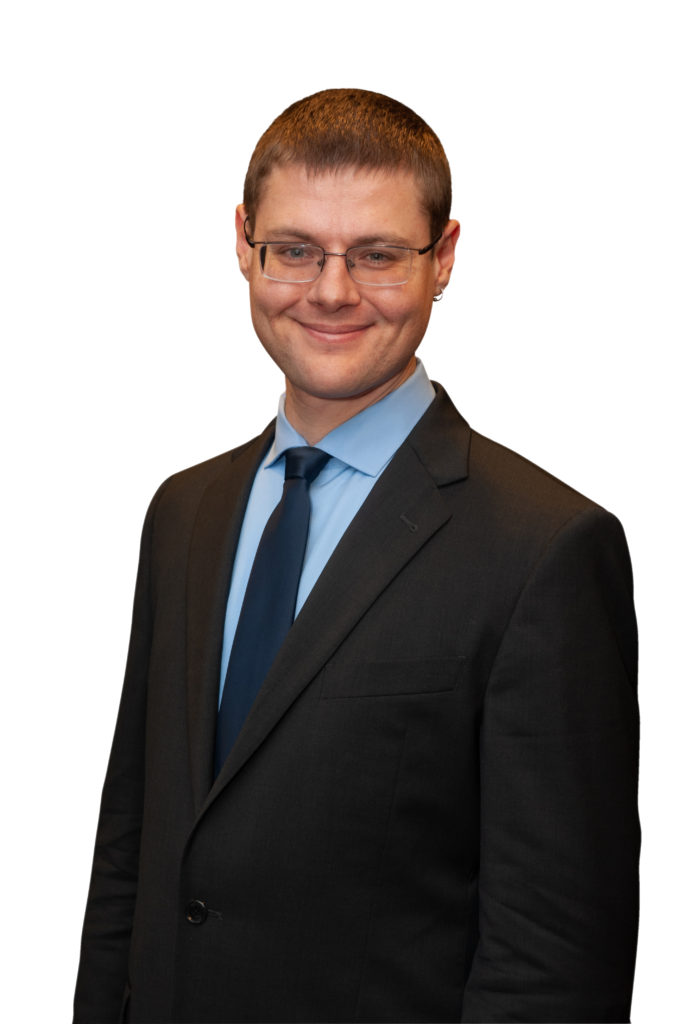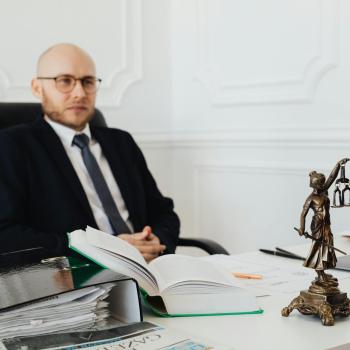
Manufacturing Attention: A Case Study
The story featured James, the COO of a mid-size manufacturing company. Its senior leadership was determined to push through with its product expansion plans even during the onset of the pandemic. When COVID-19 made the news in December, James as well as the company’s CEO and CFO dismissed any thoughts that it could turn into anything serious. However, as COVID-19 numbers started to climb in the US in early March, James grew concerned and discussed with the other leaders the possibility of postponing their expansion plans. He suggested rerouting their resources towards boosting tech and security to prepare for a possible work from home migration for the company. Then, there was the looming threat of loss of productivity in case of an outbreak and perhaps even a shutdown. The company was behind industry peers in its technology investments, relying heavily on manpower to perform assembly line tasks instead of purchasing more advanced equipment to automate its work. Operations would be crippled if even a small portion of employees were not allowed to go to work, or refused to do so due to safety concerns, since the company’s current manufacturing process required a wide set of specialized skills. The company had already been testing some equipment to automate more tasks with good results for the past few months, technology that many of their competitors had already secured and implemented in the last couple of years. James urged the CEO to greenlight the purchase of this equipment and its wide-scale implementation, instead of waiting another 12 months, as initially planned. Using this equipment, many fewer workers with a more general skill set would be needed to produce the company’s products. Unfortunately, the CEO and CFO and most of the company’s senior leaders remained unconvinced and still focused on the expansion plans, since doing so was projected to lead to the most growth for the next couple of years. Indeed, a lot of effort and planning had gone into it, and most of James’ colleagues were strongly against scrapping or shelving it. The way the other executives saw it, the number of people infected with the virus in the country was still significantly lower compared with those from China or even Italy. They expected that COVID-19 wouldn’t gain much traction in the US. The CEO decided to push through with the product expansion plans. Of course, you can already imagine what happened next, given the boom in COVID-19 cases and the wave of restrictions that were soon imposed on the country. James’ company, along with many other companies in the manufacturing industry, was heavily disrupted. James decided to contact me for a consultation in late May after learning about my work through a webinar I conducted about how organizations can adapt to the changes brought by the pandemic. When he called me, his company was already embroiled in internal team conflicts and its operations had already been severely disrupted. Even after the state allowed reopenings for businesses, many employees either refused or were unable to go to work due to quarantines, greatly slowing production. Even those who had desk jobs had a lot of difficulties working remotely due to the company’s overall lack of preparation for a work from home setup. The company’s business continuity plan was completely inadequate for such a major disruption. It was evident that the company needed help getting out of murky waters – and soon.Paying Attention to COVID-19 and Cognitive Biases
When I met with James as well as the company’s CEO and CFO over Zoom, I told them that we need to acknowledge that COVID-19 severely disrupted our world and will not disappear anytime soon. Believing otherwise helped drive many companies deep into chaos because business leaders failed to take the right action at the right time. The refusal to recognize the gravity of the pandemic and even the act of downplaying it stem from a combination of three factors:- The nature of the virus itself
- The preexisting beliefs and plans of the business leaders
- The dangerous judgment errors we all tend to make that cognitive neuroscientists and behavioral economists call cognitive biases
Dealing With Attentional Bias
Attentional bias refers to our tendency to pay attention to information that we find most emotionally engaging, and ignore information that we don’t. Given the intense, in-the-moment nature of threats and opportunities in the ancestral savanna, this bias is understandable. Yet in the modern environment, sometimes information that doesn’t feel emotionally salient is actually the most important data. For example, the fact that the novel coronavirus originated in Wuhan, China, and caused massive sickness and deaths there, didn’t draw much attention as a salient potential threat among Europeans and Americans. It proved too easy to dismiss the importance of the outbreak in Wuhan, due to stereotypical and inaccurate visions of the Chinese heartland as full of backwoods peasants. In reality, Wuhan is a global metropolis. The largest city in central China, it has over 11 million people and produced over $22.4 billion in 2018. It has a good healthcare system, strengthened substantially by China after the SARS pandemic. A major travel hub, Wuhan’s nickname is “the Chicago of China”; it had over 500 international flights per day before the outbreak. If we assume an average of 200 people per plane, that’s 10,000 people a day flying out of Wuhan to the world. Europeans and Americans, with the exception of a small number of experts, failed to perceive the threat to themselves from the breakdown of Wuhan’s solid healthcare system as it became overwhelmed by COVID-19. They arrogantly assumed this breakdown pointed to the backwardness of China’s heartland, rather than the accurate perception that any modern medical system, without major interventions like social distancing and masking, would become overwhelmed in the face of novel coronavirus. They also failed to recognize the thorough interconnectedness of Wuhan to the rest of the globe. A case in point: the first case of COVID-19 in the US was diagnosed in a traveler from Wuhan in the state of Washington. The first epicenter of COVID-19 in Europe, northern Italy, has unusually close ties to Wuhan. Europeans only began paying serious attention to COVID-19 when it began to take root in Italy. Americans, in turn, started to pay attention when COVID-19 surfaced in Washington State. Do you know who didn’t ignore Wuhan, besides a small number of experts? Those to whom this city felt emotionally salient. Those who understood that Wuhan could be fairly compared to Chicago in the US, Manchester in the UK, or Frankfurt in Germany. That emotional salience helps explain why many Chinese communities in Europe and America acted quickly and effectively to minimize the impact of COVID-19. For instance, the 50,000 Chinese in Prato, Italy – a quarter of the city’s residents – went into voluntary lockdown at the end of January. That’s three weeks before the first recorded infection in Italy. With their connections to China, they could envision what was to come, and spread the word to close their businesses, stay home as much as possible, and wear masks in the rare cases when venturing outside. That helps explain why, according to Renzo Berti, the top state health official for the region, none of the Chinese residents in Prato got COVID-19 and the town’s infection rate was half of the Italian average, 62 cases per 100,000 people rather than 115 for the entire country. Imagine what would have happened if everyone behaved like these ethnic Chinese? Businesses, individuals, and governments acting together could have prevented the enormous death toll and economic devastation from the novel coronavirus. Yet our attentional bias led us astray.Path to the New Abnormal
As the pandemic broke out, companies and other organizations overwhelmingly turned to their existing emergency business continuity plan and then simply continued with that plan as the pandemic continued. Yet continuing with emergency measures throughout the minimal two years of the pandemic is not wise, to say the least. A business continuity plan is meant for a week or two, a month at most if it’s a really good plan, before things start returning to normal (I tell you this as someone who helped businesses and nonprofits design many business continuity plans). Unfortunately, we will not return to the “normal” status quo ante pandemic. Ever. Do you think that, even in the most optimistic scenario of only two years of waves of stricter and looser shutdowns and social distancing, our society will ever be the same? Of course not. And let’s remember that we shouldn’t plan for the most optimistic scenario. As the saying goes, hope for the best, but plan for the worst. What if the first or second wave of vaccines fails? Then, it will be more like a five-year horizon instead of two years, and that’s what you should plan for going forward. Companies need to adapt to the next few years. And your emergency measures won’t cut it. You need to pay attention to and accept the current reality of ongoing waves of restrictions as the new abnormal, instead of a temporary emergency. That means fundamentally changing your internal and external business model if you want your organization to survive and thrive during these troubled months. This will include taking a long, hard look at the elements that drive your business. It will also entail revising or, in some cases, even totally revamping your daily operations and business continuity plan.Steering Back to Efficiency
When I last spoke with James in the end of June 2020, he told me that he, along with the CEO and CFO, decided that it was time to face reality and gauge how deep the company was in the mess. They decided to meet with all the senior and line managers to assess the most pressing issues in each department and come up with short- and long-term ways to address the pain points. Next, the CEO held a company-wide virtual town hall meeting to update everyone about what was happening and to present how senior management planned to solve the company’s crisis. This move made sure everyone got on the same page, while also reassuring rank-and-file employees that managers were aware of and listening to their concerns. Due to the CEO’s efficient and engaging way of handling the town hall, a lot of pent-up resentment across the company was significantly reduced. This paved the way for better cooperation, which was crucial for the succeeding major steps that James, the CEO, and CFO took — starting with stopping all projects related to the product expansion and shelving it for the next two fiscal years. Fortunately, only about 30% of the budget resources had been released for the expansion-related projects by the time they first consulted me. As a result, the CEO, CFO, and James were able to make a timely and strategic plan on how they can reallocate the remaining 70%, including:- Purchasing and installing the automation equipment
- Investing into necessary social distancing and hygiene measures at their manufacturing facilities to comply with CDC guidelines
- Boosting tech, security, and funding for home offices for an efficient work from home transition for all employees who could be moved to telecommuting
- Providing professional development for their workers, both in working from home collaboration and communication for those who worked from home, and in using the new equipment and CDC guidelines compliance for those who needed to come to work
Conclusion
Remember James’ example and evaluate where you might be paying attention to the wrong data. Step back and acknowledge the complexity and nuance of the situation, despite the challenges of cognitive dissonance. Then, balance accurately both bad and good news to determine your path forward.Key Takeaway
You can defend your company from disastrous leadership decisions by paying attention to what’s important during this pandemic…> Click to tweet
Questions to Consider (please share your answers below)
- Did your leadership team make bad decisions at the onset of the pandemic, and do you now want to make things right?
- Where might you do a better job of fighting against attentional bias?
- Which next steps will you take based on reading this article?
Bio: An internationally-recognized thought leader known as the Disaster Avoidance Expert, Dr. Gleb Tsipursky is on a mission to protect leaders from dangerous judgment errors known as cognitive biases by developing the most effective decision-making strategies. A best-selling author, he is best known for Never Go With Your Gut: How Pioneering Leaders Make the Best Decisions and Avoid Business Disasters (Career Press, 2019), The Blindspots Between Us: How to Overcome Unconscious Cognitive Bias and Build Better Relationships (New Harbinger, 2020), and Resilience: Adapt and Plan for the New Abnormal of the COVID-19 Coronavirus Pandemic (Changemakers Books, 2020). He published over 550 articles and gave more than 450 interviews to prominent venues such as Inc. Magazine, Entrepreneur, CBS News, Time, Business Insider, Government Executive, The Chronicle of Philanthropy, Fast Company, and elsewhere. His expertise comes from over 20 years of consulting, coaching, and speaking and training as the CEO of Disaster Avoidance Experts. It also stems from over 15 years in academia as a behavioral economist and cognitive neuroscientist. Contact him at Gleb[at]DisasterAvoidanceExperts[dot]com, Twitter @gleb_tsipursky, Instagram @dr_gleb_tsipursky, LinkedIn, and register for his free Wise Decision Maker Course.














